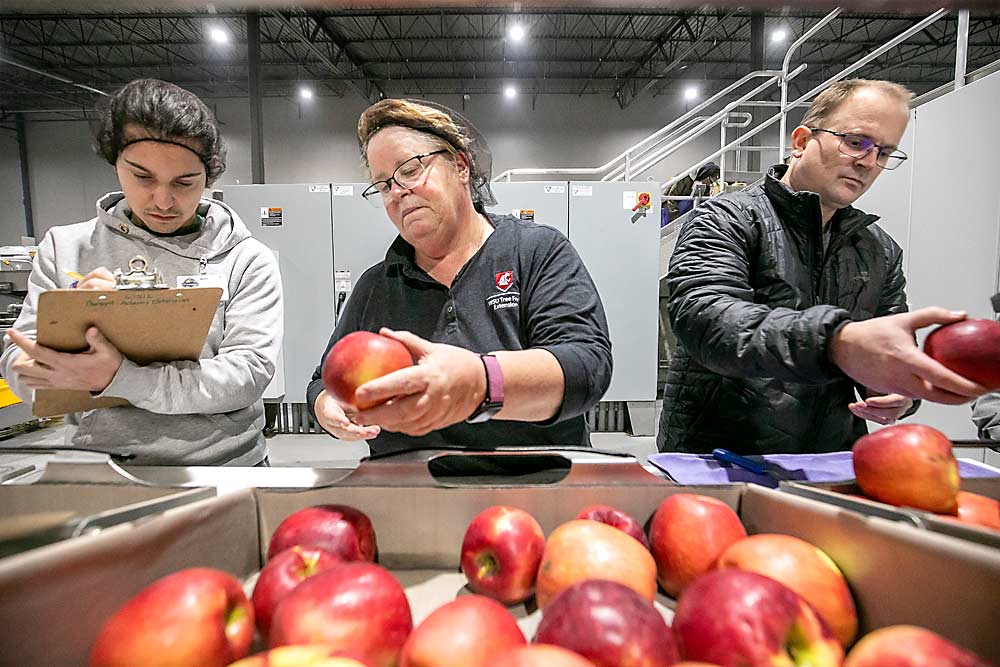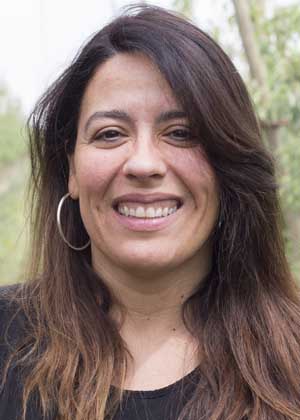
The Cosmic Crisp continued to shine through April as its rookie season played on.
After second-leaf fruit began shipping on Jan. 1, packouts remained high for the WA 38, the apple variety bred by Washington State University and marketed as the Cosmic Crisp.
The second-leaf packout was 86.4 percent among the warehouses sampled by Carolina Torres, WSU tree fruit postharvest physiologist. That is actually higher than the third-leaf packouts from December.

“I think they’re pretty happy,” Torres said about the growers and packers.
The university released the apple commercially in 2019 with sales from third-leaf fruit opening on Dec. 1. Second-leaf fruit started sales on Jan. 1.
She expected to see lower packouts from younger trees, because, generally speaking, the vigor of immature trees can affect fruit quality.
Torres and other researchers from WSU and the Washington Tree Fruit Research Commission worked with warehouses to measure packout and analyze the causes of culls.
In 2020, measuring second-leaf fruit, the team gathered data and fruit from three lots at two packing houses to assess 8,000 pieces of culled fruit — enough to fill five bins.
The most common reason for culls was green spot, a disorder caused by a nutritional deficiency, which comprised 11 percent of the culls she analyzed. Stem punctures made up 9.6 percent of the culls, and limb rub accounted for 9.1 percent.
Torres cautioned that those figures represent the share of the culled apples and make up only a small fraction of the state’s overall crop. Additonally, she could only measure the apples that actually made it to the warehouse, not apples that pickers decided to leave on the trees.
She also warned this second-leaf study measured a smaller sample size than her third-leaf studies in December, when she analyzed fruit from 17 lots gathered at seven packers, comprising twice as many cull samples.
Packouts for that first month, with demand bolstered by marketing hype, were 78.3 percent at the warehouses visited by the researchers. Stem punctures accounted for 16 percent of the third-leaf culls, green spot 15.8 percent and limb rub 11.2 percent.
Proprietary Variety Management, or PVM, a Yakima company contracted by WSU to manage the commercial release of the WA 38, plans to tabulate its own fruit quality metrics but is still in the process of collecting data from all 17 warehouses in Washington packing the Cosmic Crisp, said Jill Burberry of PVM.
“Overall, we felt quality of the second-leaf fruit was good,” Burberry said. Anecdotally, fruit quality has been good in the packing houses that staff visited, she said.
WSU and the Washington Tree Fruit Research Commission have shared their findings with the standards advisory committee, a group that makes recommendations about fruit quality standards. In late April, they were scheduled to do that “very soon,” Burberry said. •
—by Ross Courtney






Leave A Comment